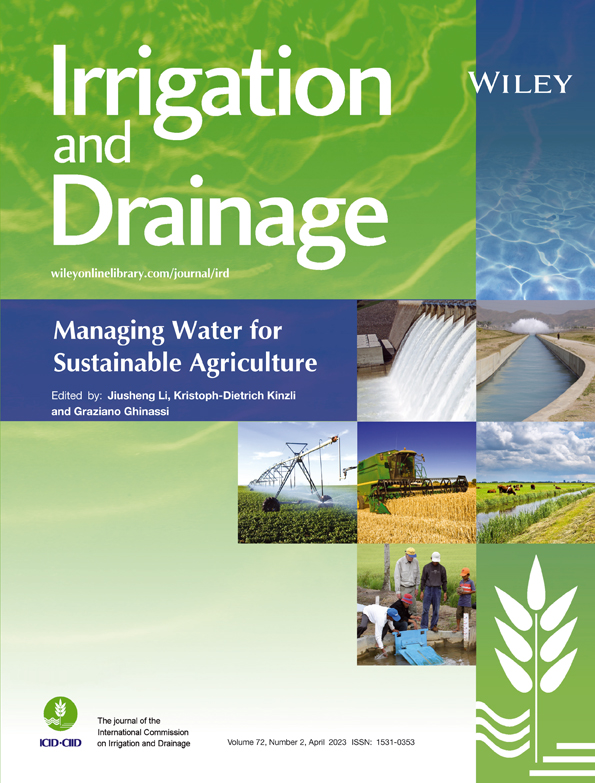Performance of sand filter with disc and screen filters in irrigation with rainbow trout fish effluent
Article title in French: Performance du filtre a sable avec des filtres a disque et a crible dans l'irrigation avec les effluents de truite arc-en-ciel.
Funding information: This work has been supported by the Centre for International Scientific Studies & Collaboration (CISSC), Ministry of Science, Research and Technology, Government of Iran (grant no. 481).
Abstract
enDrip irrigation is the most suitable system for reusing effluents in agriculture, but emitter clogging is still its major drawback. Adequate filtration is needed to prevent emitter clogging, but little information is available about the performance of different filter types when using fish farm effluent. The purpose of this study was to evaluate the performance of three filtration treatments for rainbow trout effluent in drip irrigation systems: (1) sand filter (T1), (2) sand filter followed by a disc filter (T2) and (3) sand filter followed by a screen filter (T3). The treatments were tested with a constant discharge of 14.4 m3 h−1 at two working pressures of 300 and 150 kPa until reaching the backwashing threshold. For each filter, the following were computed: filtered volume per cross-section until reaching the backwashing threshold (VB), filtered volume per cross-section unit and head loss (V10), suspended solids removal efficiency (EF) and filter mass retention (q). T2 at 300 kPa had a significantly (p < 0.01) higher VB, whereas T1 and T3 only showed a VB of 53% and 45% at 300 kPa and 48% and 47% at 150 kPa, respectively, higher than that obtained by T2. The results suggest that using a combination of sand and disc filters at an operation pressure of 300 kPa is the best option when using rainbow trout effluent.
Résumé
frL'irrigation goutte-à-goutte est le système le plus approprié pour réutiliser les effluents en agriculture, mais le colmatage des buses individuelles reste son principal inconvénient. Une filtration adéquate est nécessaire pour éviter le colmatage des buses individuelles, mais peu d'informations sont disponibles sur la performance des différents types de filtres lors de l'utilisation d'effluents de pisciculture. Cette étude visait à évaluer la performance de trois traitements de filtration pour les effluents de truites arc-en-ciel dans les systèmes d'irrigation goutte à goutte: Un filtre à sable (T1), un filtre à sable suivi d'un filtre à disque (T2), et un filtre à sable suivi d'un filtre à crible (T3). Les traitements ont été testés avec un débit constant de 14,4 m3 h−1 à deux pressions de travail de 300 et 150 kPa jusqu'à atteindre le seuil de remous. Pour chaque filtre, les paramètres suivants ont été calculés: volume filtré par section transversale jusqu'à ce que le seuil de remous soit atteint (VB); volume filtré par unité de section transversale et perte de charge (V10), efficacité de l'élimination des solides en suspension (EF); et rétention de masse du filtre (q). T2 à 300 kPa présentait un VB significativement (P < 0,01) plus élevé, alors que T1 et T3 ne présentaient qu'un VB de 53 et 45% à 300 kPa et de 48 et 47% à 150 kPa, respectivement, supérieur à celui obtenu par T2. Les résultats proposent que l'utilisation d'une combinaison de filtres à sable et à disques à une pression de fonctionnement de 300 kPa soit la meilleure option lors de l'utilisation d'effluents de truites arc-en-ciel.
CONFLICTS OF INTEREST
The authors declare that they have no competing interests.
Open Research
DATA AVAILABILITY STATEMENT
The datasets used and/or analysed during the current study are available from the corresponding author on reasonable request.




